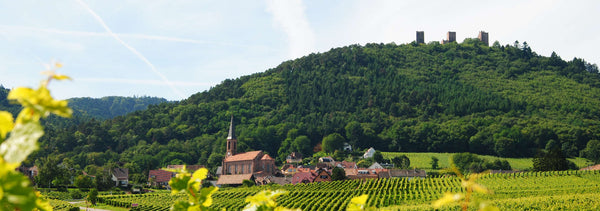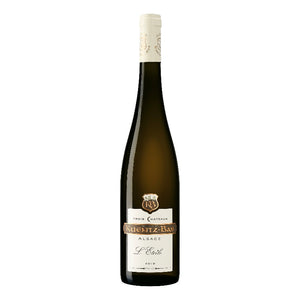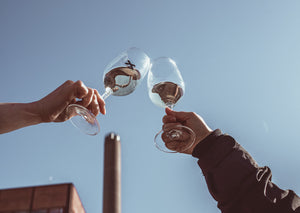
Kuentz-Bas
Many French wineries are born out of love, and this is also the case with Kuentz-Bas. Since 1795, the Kuentz family has acted as a true ambassador of Alsace wine production, and when the two families joined together through marriage in 1918, a winery began, which today is one of the most prestigious in the region. The Kuentz-Bas estate is located in the village of Husseren-les-Châteaux, at the highest geographical location in Alsace. Located at an altitude of 400 meters, the Trois Châteaux barns resemble a patchwork quilt in the Alsatian style, although the soil in the barns is mainly composed of calcareous clay and sandstone. Due to its high location, the grapes ripen late, so they are full of flavor and fresh and tart. The ages of shelters vary between 25 and 75 years.
In the beginning, the wines were mainly sold locally in the area bordered by the Vosges mountains, but over time the wines first conquered the hearts of Parisians, then outside France, and now also Finnish wine lovers. The cellar built in 1894 is still in use, but the technology needed for winemaking has been updated over the decades. By 2003, the family gardens The Trois Châteaux in the area covered 12 hectares. Of these In connection with the towers located in the village of Husseren-les-Châteaux, the fourth, old watchtower, which still stands out on a bright winter day, has given its name to the farm's La 4ème Tour wine series. The following year, when Jean-Baptiste Adam and Samuel Tottoli took the reins of the farm, Kuentz-Bas's reputation got a new wind in its sails, and between 2017 and 2023, the farm in the hands of Olivier Raffin has sailed to newer and higher waves.
With Jean-Baptiste Adam, the Kuentz-Bas farm started to practice biodynamic viticulture methods, with the aim of producing even higher quality wines that express their origin. Also, the amount of crops produced by nurseries began to be limited more than before. With this, the house's Grand Cru vineyards, such as Eichberg and Pfersigberg, have gained a lot of attention around the world. Today, up to 30% of the farm's production comes from Grand Cru-classified farms.
The nature of the grapes produced by each vineyard determines their vinification methods. The wines of the Tradition series are made in large old oak barrels, and the wines from the best orchards of Trois Châteaux are generally in steel tanks. Raffin prefers to work in the orchards rather than in the cellar, so in the cellar the wines are allowed to mature on their own over time. The fermentation processes take place with the help of a natural yeast strain and the wines are allowed to mature for a long time on the lees. By reducing the amount of sulfur dioxide, the wines have become fruitier, more mineral and drier year by year. You don't want to miss these wines!
Today, the farm owns 10 hectares of biodynamically and 6 hectares of organically certified vineyards. In addition, there are 14 hectares of other vineyards in production, located on the slopes near Husseren-les-Châteaux.
The producer has a Demeter certificate.


